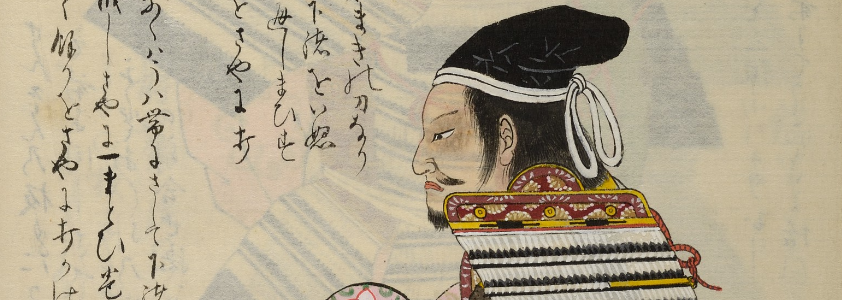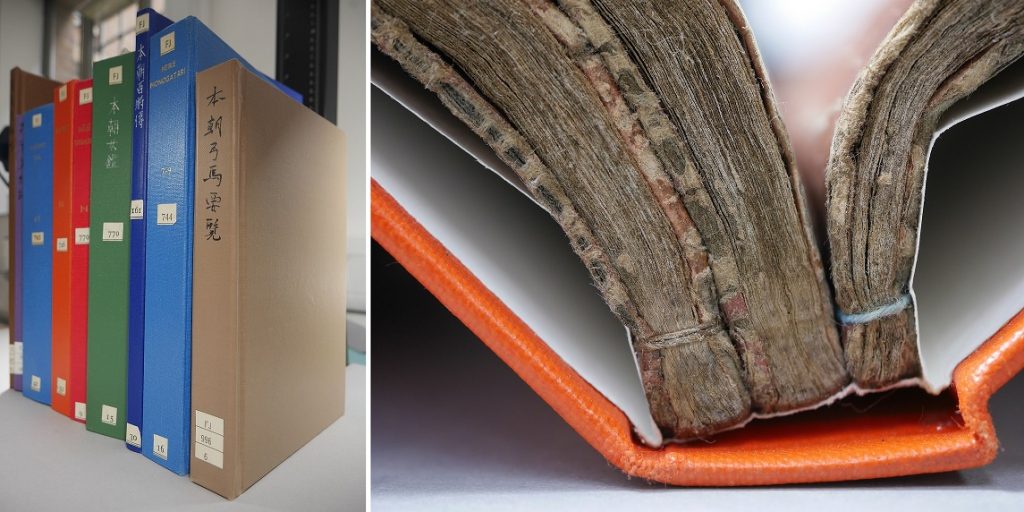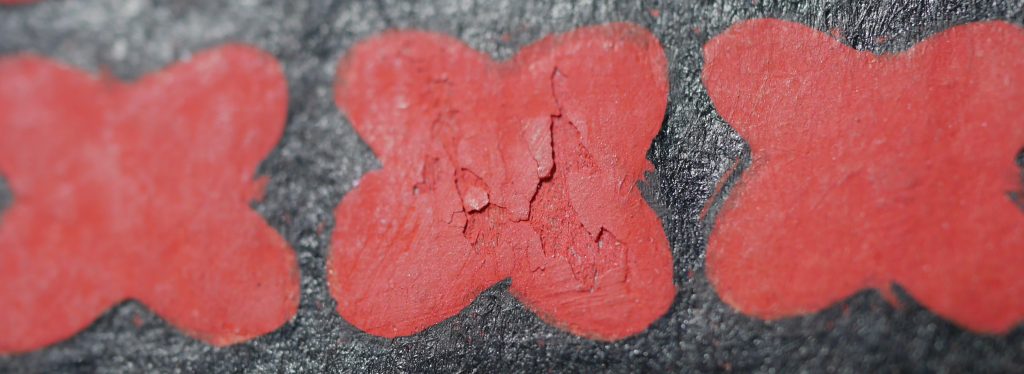
Conservation for a Legendary Exhibition
Cambridge University Library is home to one of the pre-eminent collections of Japanese material outside of Japan, including one of the first Japanese books ever to reach British shores. In November 2019, our Conservation and Collection Care team commenced preparations for Samurai: History and Legend. The exhibition, which opened in January 2022, focusses on the social and cultural roles of the samurai warrior class in Japan from the 11th century to the late 19th century. Supplemented with objects from the Cambridge University Museum of Archaeology and Anthropology, the display is the first major exhibition to showcase the Library’s Japanese rare book collection, many of which have never been displayed before.
Our initial conservation survey revealed that 27 of the rare books selected for display had been rebound into European hardback formats as part of a widescale reformatting campaign in the 1960s. The original Japanese side-stitched bindings were still intact but were concealed beneath Western-style case bindings.

The exhibition provided the impetus to examine the impact of this previous treatment, involving an assessment of how well each book opened and the resulting stresses on the original Japanese bindings. Immediately, it was evident that the 1960s bindings were damaging the delicate Japanese paper covers every time the books were consulted, and the volumes were difficult to open due to the two book formats fighting against each other in true samurai style.
In order to obtain the best advice for our conservation treatments, we reached out to the Bodleian Library’s Japanese book conservation expert Robert Minte. Over two days (pre-pandemic) Robert was able to share his knowledge of conservation techniques suitable for Japanese books and scrolls, enabling our team to formulate complex treatment plans for conserving our samurai treasures.

Over a period of nine months, the rebound Japanese books were painstakingly released from their 1960s covers. The team used conservation air pens which delivered a controlled stream of hot air to help soften the adhesives used in the rebinding. The team also carried out delicate paper repairs and pigment consolidation across the affected volumes.



Another requirement of the conservation project was to address the housing needs of the books once they were removed from their case bindings. The Head of our Japanese and Korean Section, Dr Kristin Williams, was keen to use traditional Japanese protective enclosures and we looked at period Asian examples from the UL’s collection. Collection Care Assistant, Bryan Deighton, created traditional Japanese chitsu enclosures, but adapted to meet European standards for conservation-grade materials. Chitsu hinged cases are culturally appropriate and open in a manner befitting the handling requirements and text orientation of Japanese books.

Samurai: History and Legend runs from 22 January – 28 May 2022.

Exhibition supported by the Sasakawa Foundation.

Wow what a great job, and so worthwhile
Wonderful, such lovely objects to work on. !!!